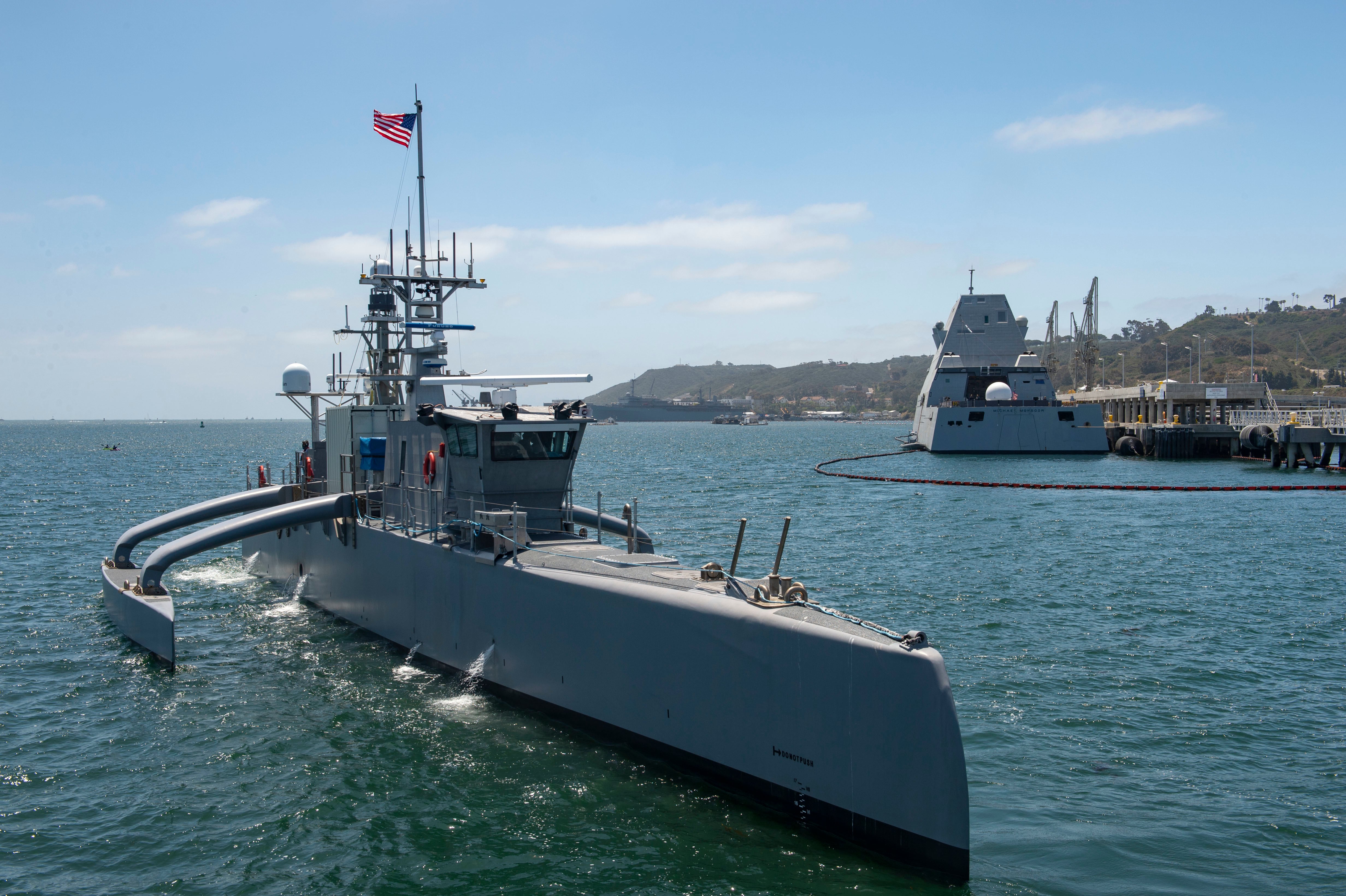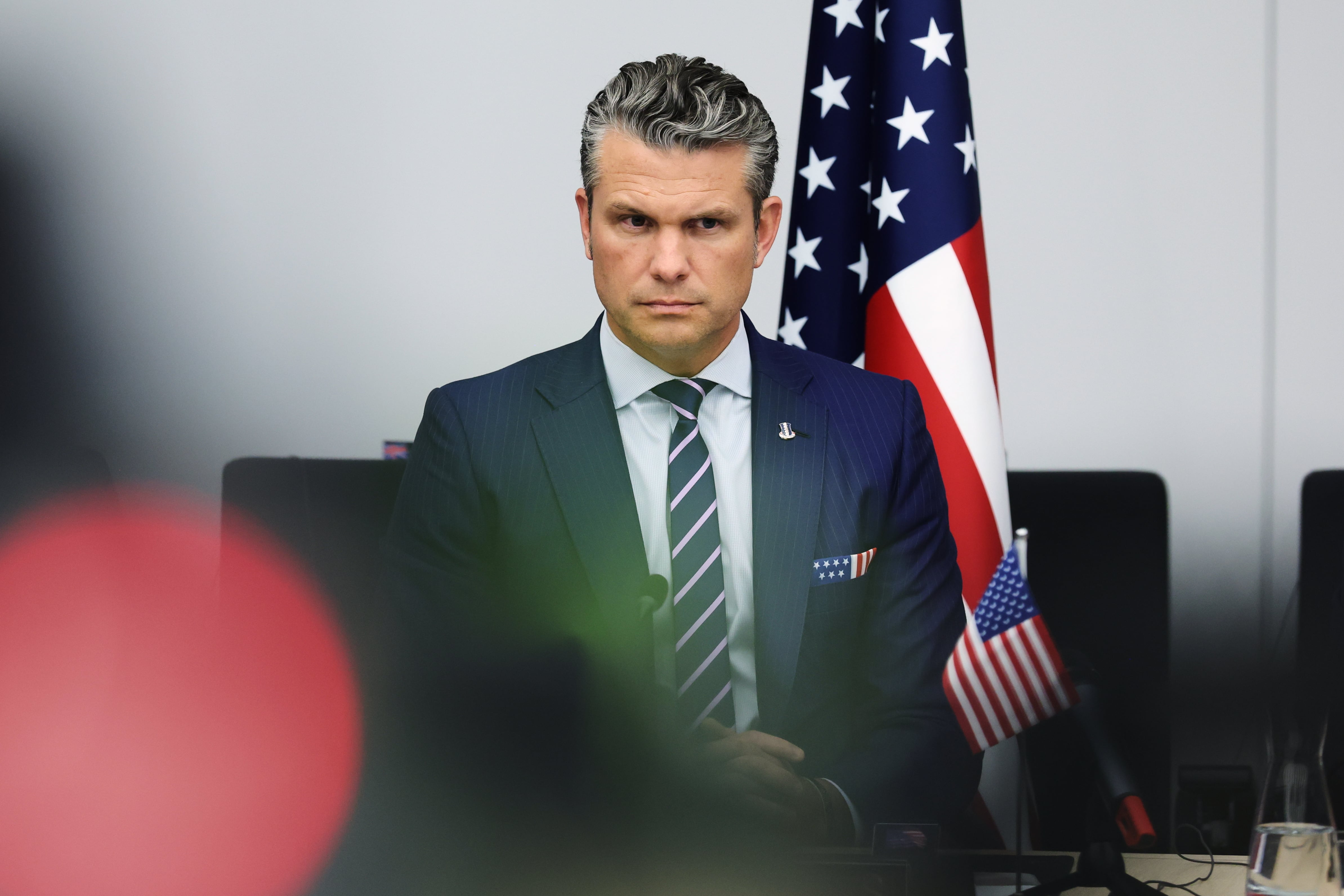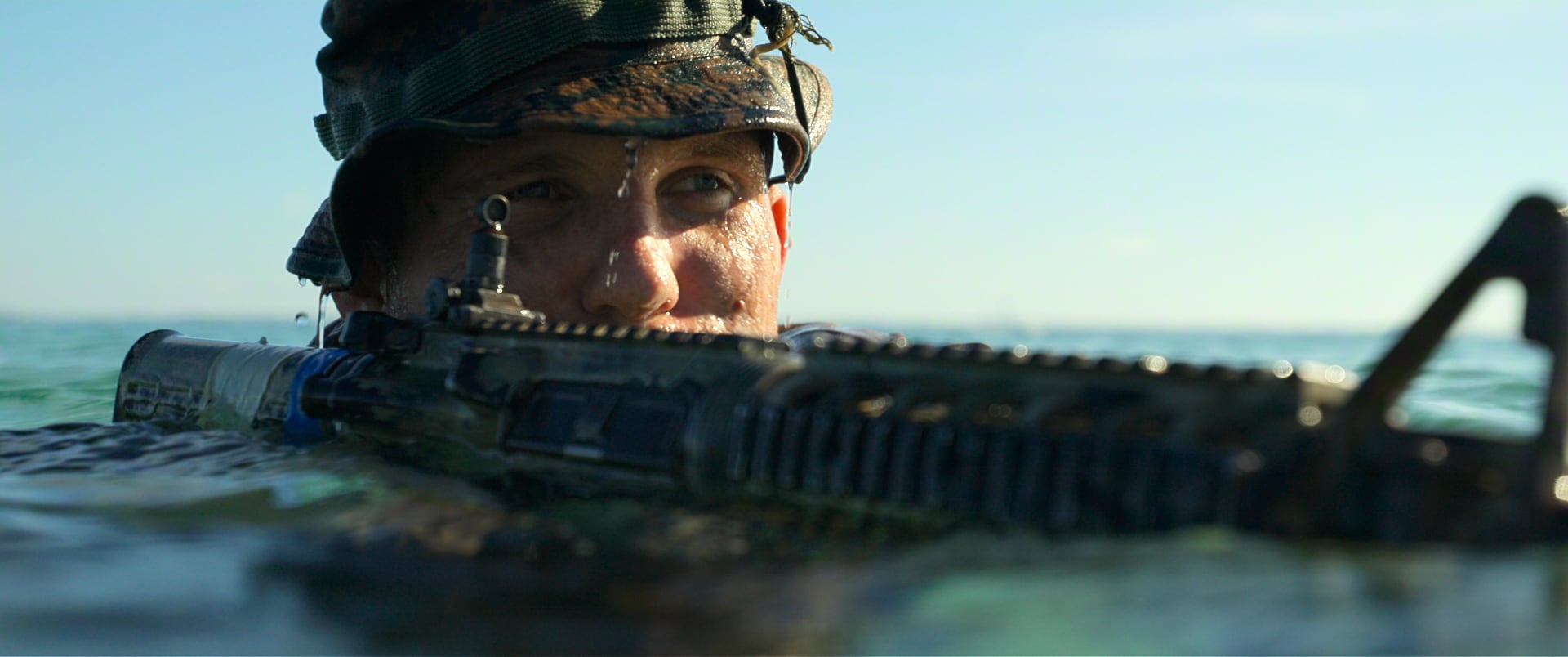WASHINGTON — The head of a new unmanned and artificial intelligence task force in the Middle East said the U.S. Navy will begin using off-the-shelf gear to boost maritime domain awareness in the region, first gaining trust in the systems and then applying them to real missions.
The Navy announced the creation of Task Force 59 last month, which will operate out of U.S. 5th Fleet headquarters in Bahrain and try to apply emerging unmanned and AI technologies to solve some of the most urgent challenges in that region.
Capt. Michael Brasseur, the inaugural commodore of the task force, said in a recent panel presentation 5th Fleet is a big theater with a lot of challenges, and he needs unmanned technologies to give him more eyes on potential problem areas and help direct limited manned assets where they’re most needed.
“The type of technologies we’re looking at are the dual-use maritime robotics, very inexpensive, allow us to get a lot of sensors in the water. When you partner with allies and partners, that gives you a chance to scale quickly. When you scale quickly, you can start to close those maritime domain awareness gaps, and then you can … deter the illicit and malign activity that’s happening over here, whether it’s on the low end, illegal fishing [or] on the high end, weapons transfers supporting the Houthis in the southern Red Sea,” he said at the Fed Supernova defense innovation conference Sept. 29.
“So it’s the full spectrum, but for us it comes all the way down to maritime domain awareness, knowing what’s going on and then being more precise with the manned assets,” he continued.
Two months ago, he said, 5th Fleet hosted several organizations that specialize in unmanned and other emerging technologies for a “design sprint” in Bahrain to help determine how the task force would look and what it would do.
The task force was officially stood up on Sept. 9, and since that time it has been taking inventory of legacy unmanned systems in the region that could be reinvigorated with the help of new AI and machine learning tools, as well as commercial robotics that could be easily and inexpensively acquired and repurposed for military missions.
“We’re going to start small with some [unmanned surface vessels], start to build trust in the human-machine team. As we build trust, we’ll scale up with more capable assets, USVs and [unmanned aerial systems], and then we’ll start to put it on real missions,” Brasseur said.
“We’re also in parallel working with partners in the region to help us scale,” he continued. “There’s a lot of interest in unmanned over here, and once you start bringing in partners you can scale and then start to close some of those gaps.”
As an example, he said the task force is already working with U.S. Marines deployed to the area who are using the Martin UAV V-Bat vertical takeoff and landing UAS.
“We think we know what they’ll do with it … but never underestimate a sailor or a Marine with a problem: they’ll always find a new way to solve that problem. We’re just trying to accelerate getting the kit in the hands of the end users,” Brasseur said.
Additionally, he said, the task force is looking for unmanned and AI tools that can fuse data from a large number of sensors and put the data in a form that’s usable and actionable for fleet commanders — and will eventually allow commanders to stay ahead of maritime challenges in 5th Fleet waters.

In a Sept. 8 media roundtable announcing the standup of Task Force 59, 5th Fleet Commander Vice Adm. Brad Cooper told reporters the task force would take unmanned systems already in theater — primarily UAVs — and supplement them with more systems on and under the sea.
Small exercises will build up the ability to use single unmanned systems, networks of unmanned systems and manned-unmanned teaming constructs, leading up to the International Maritime Exercise (IMX) 2022 event, which could include more than 60 countries. Cooper said IMX is 5th Fleet’s largest exercise each year and in 2022 will focus on unmanned and AI technologies.
Brasseur helped stand up NATO’s Maritime Unmanned Systems Initiative in 2018, prior to his assignment to 5th Fleet, and has experience integrating unmanned and emerging technologies to fleet problems.
During the panel discussion, he spoke about illegal fishing as a global problem that isn’t always taken seriously, especially when naval and law enforcement resources are limited. But he said fishermen who can no longer provide for their families due to overfishing by others will turn to other and sometimes illegal means to provide for their families, making fishing issues very relevant to maritime and regional security.
Cooper said in the Sept. 8 call that, while maritime domain awareness is a challenge globally, 5th Fleet is a particularly tough environment and a good home for this unmanned task force.
“The concept here is, if it can operate here, they can probably operate in other areas,” Cooper said, referring to the 5,000 miles of coastline, three major maritime chokepoints, extreme heat and heavy seas and winds during monsoon season.
Additionally, “it’s a very rich operational environment with real issues and problems in the maritime domain awareness,” and the 34-nation Combined Maritime Forces coalition that promotes Middle East stability and security is eager to participate in applying unmanned technology to the region.
During the recent panel, Brasseur said the Tech Bridge network of Navy-industry interface offices played a big role in designing the task force and arranged for some early systems to be sent into theater for testing.
National Tech Bridge Director Whitney Tallarico said in the panel discussion her team — which was involved in the design sprint phase alongside organizations like the Joint Artificial Intelligence Center, the Program Executive Office for Unmanned and Small Combatants and Project Overmatch leadership — this week would go over some of the regional challenges from 5th Fleet in a classified setting and determine which need to remain classified and which can be put out to industry through the Tech Bridge network, which falls under the NavalX organization. NavalX has several contracting vehicles available to quickly get a prototype out into 5th Fleet with Task Force 59, she said.
In parallel to this Task Force 59 effort, Navy headquarters is also setting up a group to identify the right kinds of unmanned systems for future Navy operations and usher them into the fleet.
Chief of Naval Operations Adm. Mike Gilday said during the Defense News Conference on Sept. 8 this effort will complement Project Overmatch, the Navy’s effort to develop a network to tie together unmanned and manned systems.
This group, which will be formed in the coming months, will be similar to Project Overmatch in its scope and purpose, “where I have a group of technical experts along with operators who put meat on this problem set to move forward in all domains at speed, to make unmanned a reality by the end of this decade, so that we can begin to put ourselves in a position where we can scale these assets and really make them an important part of the fleet — make distributed maritime operations come alive in a way that it’s real.”
Brasseur as Task Force 59 commodore will be part of this task force, and Navy headquarters was involved in the design and standup of the 5th Fleet task force to ensure the two efforts are complementary, Brasseur and Cooper said in the media call.
Megan Eckstein is the naval warfare reporter at Defense News. She has covered military news since 2009, with a focus on U.S. Navy and Marine Corps operations, acquisition programs and budgets. She has reported from four geographic fleets and is happiest when she’s filing stories from a ship. Megan is a University of Maryland alumna.





